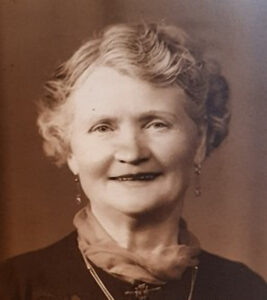
Sir,—I listened back with great interest to your Hedge School, ‘Soloheadbeg—impact and legacy’, recorded at Ballykisteen Hotel, Limerick Junction, Co. Tipperary, on Saturday 19 January 2019 (https://www.historyireland.com/podcast/soloheadbeg-impact-legacy/). In response to a question to the panel from the floor on the role of women in the War of Independence, I was surprised that no mention was made of Marian Tobin of Tincurry House, Cahir, who stands out locally and nationally.
As a widow with three schoolgoing children, she was involved at the very beginning of the war, sheltering the men involved in the Soloheadbeg ambush in January 1919—at that time the four most wanted men in Ireland. Contrary to the podcast, the men did not ‘scatter to the wind’. Dan Breen wrote that ‘Mrs Tobin made contact for us and housed us for several days when the area was very hot’. He described her as ‘our most trusted woman in Tipperary’ and ‘one of the best workers we had from 1917 to 1923’.
Tobin was not in Cumann na mBan—she was a member of the IRA. Séamus Robinson, the commanding officer of the Third Tipperary Brigade, wrote that Tincurry House was in constant use by the IRA from 1919 until 1923 and Tobin was ‘de facto and de jure’ an IRA member.
When Michael Collins assigned Ernie O’Malley Captain GHQ to South Tipperary in May 1920, O’Malley used Tincurry House as the headquarters for the Cahir and Clonmel and later Rosegreen battalions. Tobin’s home was used to host high-level meetings, hide arms, train Volunteers, conduct practice drills and experiment with explosives. There was a dugout on her land that could accommodate up to twenty men. After the Hollyford Barracks attack, Robinson and O’Malley were refused shelter by a senior officer of the Cahir battalion but Tobin took them in willingly. Tobin recounted how she risked her life by driving O’Malley, when there was £1,000 on his head, from Tincurry to Kilbehenny. In May 1920 Tobin made history by being elected the first female county councillor in Tipperary, one of just 43 across Ireland.
When O’Malley was appointed commandant general of the Second Southern Division (Tipperary Mid and South, Mid Limerick and Kilkenny) in February 1921, Tincurry House operated as his divisional headquarters before it was destroyed by the British in May 1921 in reprisal for the kidnap and execution of DI Gilbert Potter. Such was Tobin’s sphere of influence that the destruction of her home was discussed two weeks later in the House of Commons, London.
Secrecy was critical, which explains why Tobin’s role is not broadly known. She was cool under pressure and methodical in clearing evidence. Despite regular raids by the British Army from the nearby barracks, no Volunteers were captured and nothing incriminating was ever discovered at her home.
Tobin’s role is documented in the testimonies of O’Malley, Breen and Robinson in the Military Service (1916–1923) Pensions Project. Articles about Tobin have been published in Daughters of Dún Iascaigh: a light on the history of Cahir women (2018) and in the Tipperary Historical Journal (2024). However, there is more to learn, with new material continuing to emerge.—Yours etc.,
ANNETTE CONDON
(grand-niece of Marian Tobin)
